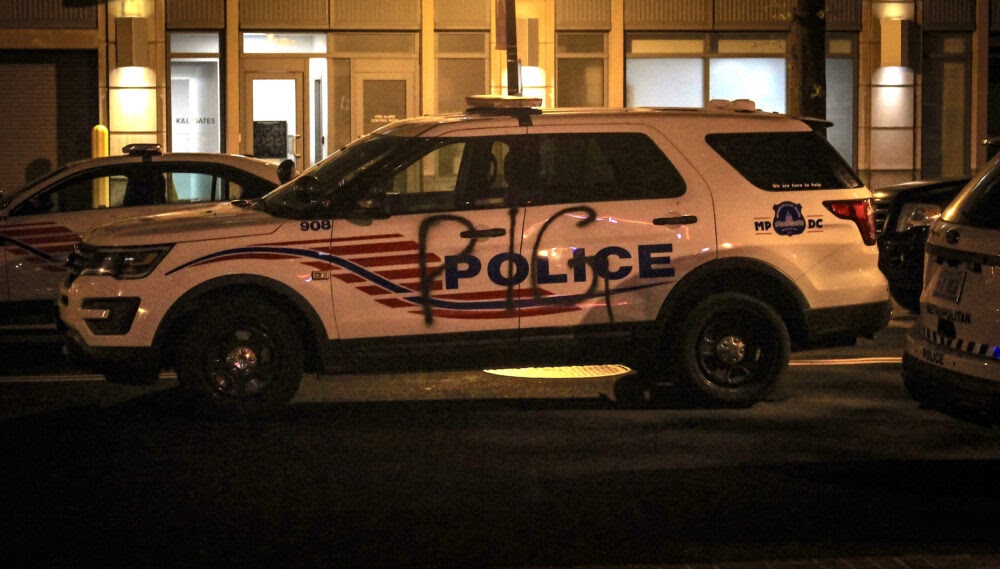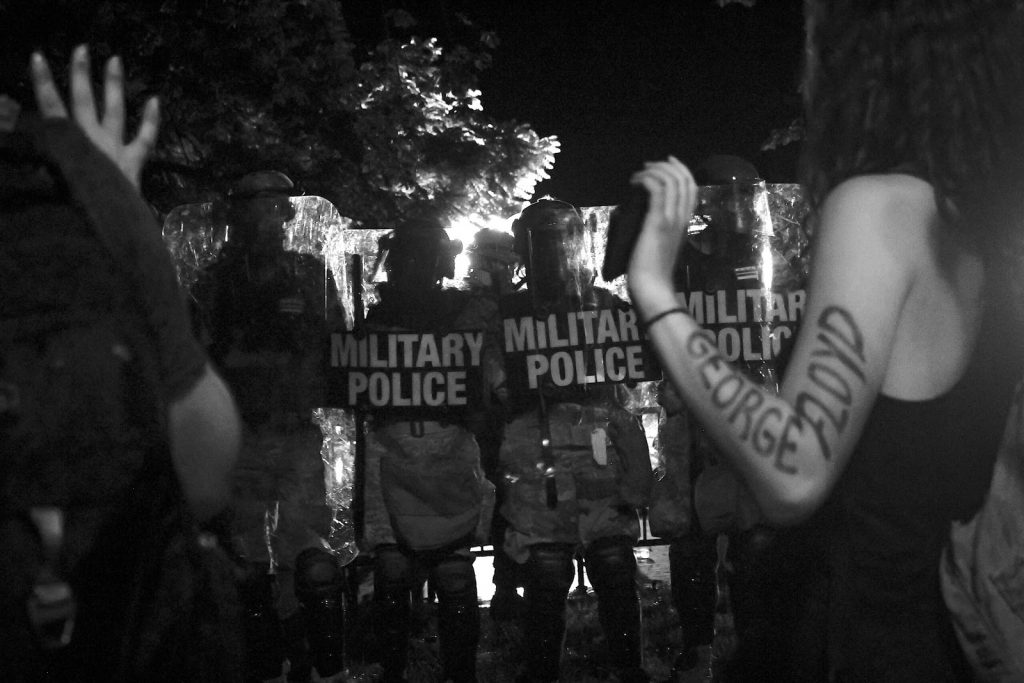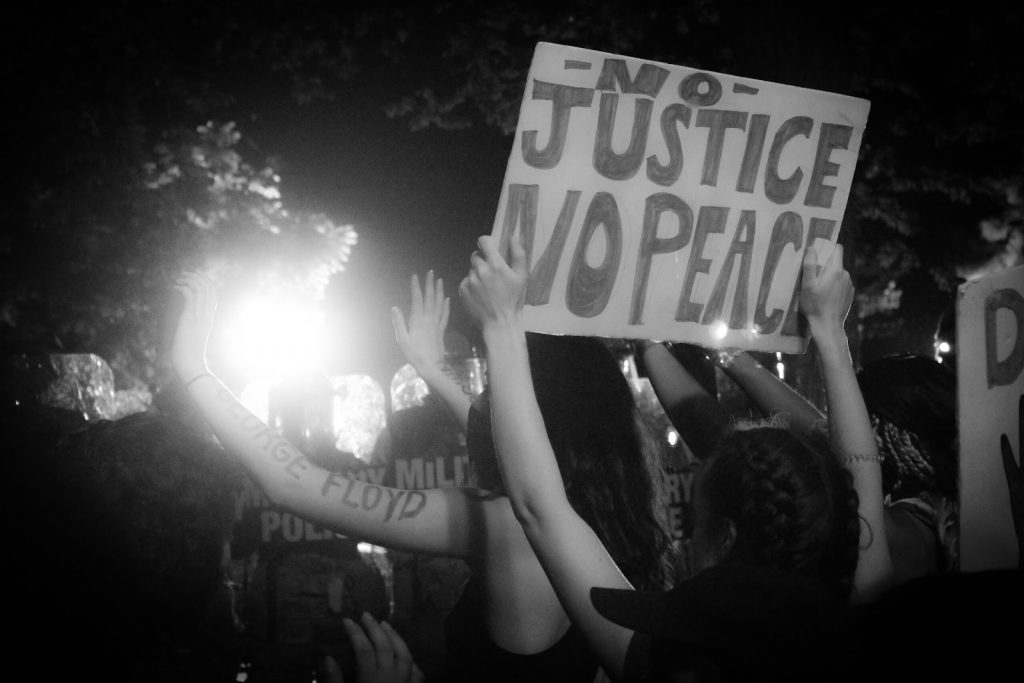With all the protests and anger and violence across the country, a justified discussion about policing has begun on our corporate media airwaves. (I would say the discussion is overdue, but in fact, we’ve had it roughly every three years for the past 40 years.) However, despite all the coverage, a deeper debate sits ignored – A debate about why our American police system exists at all, how it works (or doesn’t), and where it came from.
by Lee Camp
The following 19 facts about American policing will change everything you think you know. First, let’s start with the sheer amount of murder.
- Police kill roughly 1,000 Americans per year. In 2016 The Guardian found that American police murdered 1,093. That’s three lives extinguished by police every day.In the UK the average per year is three murders by police. Not 300. Just three. This means American police generally kill more citizens in a week than the UK will kill in a year. In 2018 Denmark & Switzerland’s police killed no one. Zero. They literally let everyone live. (You would think they would kill at least a few just to stay in practice.)
- The vast majority of those Americans killed are not “hardened” criminals (whatever that means). The Treatment Advocacy Center finds that one out of every four people killed by U.S. police was severely mentally ill. If you add in simply mentally unstable or cognitively impaired, the number is much higher. Probably well over 50 percent of the time police murder someone, the victim is not of a stable and sound mind.
- Last year NBC News found that since 2005, only 35 officers had been convicted of any crime after having taken someone’s life. If we assume the U.S. averaged 900 police killings per year (a very low estimate) and that only one officer was involved in each killing (an even lower estimate), this means cops are convicted .28% of the time after killing someone. Less than one percent. But it gets worse.
- NBC reports, “Only three officers have been convicted of murder during this period [2005 to 2019] and seen their convictions stand.” That’s a rate of conviction of .024% – For all intents and purposes, police officers can murder with impunity.
What Cops Do All Day

Now let’s take a moment to disabuse ourselves of the liberal fantasy of policing. The vast majority of what police do in America is not run around catching the evil-doers like an episode of CSI or Law & Order or Die Hard or Starsky & Hutch or all the other TV shows and movies ever made ever.
- Professor Alex Vitale notes in “The End of Policing” that most cops average less than one felony arrest per year – meaning almost the entirety of a police officer’s day-to-day consists of standing around and occasionally dealing with small or nothing crimes. These “crimes” such as loitering or “causing a disturbance” are designed to simply “put people in the system.” People of color are far more likely to be arrested for these types of crimes. Once “in the system,” the sentence for a future “crime of loitering” or “atrocity of playing loud music” can be much longer.
- Vitale continues, “Even detectives (who make up only about 15% of police forces) spend most of their time taking reports of crimes that they will never solve—and in many cases will never even investigate. …Most crimes that are investigated are not solved.”
- Rather than working harder to solve larger crimes, our government officials have created hundreds of smaller “crimes” for police to nail citizens for. In the past few decades there has been a surge of bans on things like sleeping in public, begging, giving away free food, “camping” in public, and sleeping in one’s car. Laws like these only serve to make homelessness (and helping the homeless) illegal and allow police to insert themselves, often upending lives. (Because people begging for change often have it too easy.)
- A study in New York City found that over half of those who cycle regularly through the prison system were homeless. Does anyone honestly believe that endlessly grabbing homeless people and charging them for nothing crimes does anything to help our society or the people involved? The fact that most officers spend their days doing this is equivalent to firefighters walking around spraying people’s cigarettes with water while the actual building fires are left to burn. (More on those in a moment.)
- When wealthy or even middle-class people get caught doing most of these small crimes, they are either ignored by the police or let off with a warning. If a Wall Street trader in a suit and tie takes a nap on a bench, do the police lock him up? If a doctor or a dentist or real estate agent is “caught” sleeping in their car, are they brought down to the station? No. These so-called “crimes” serve to simply enforce the class structure and give police a reason to arrest the poor and the non-white.
- Meanwhile, true crimes don’t even garner a glance. The largest crimes in the nation and the world are often legal, and even when they aren’t, they have nothing to do with police. Corporate executives endlessly decide to dump toxins in our water or keep a baby powder on the shelves when they know it contains asbestos or continue sales of an herbicide when they know it causes cancer or push opioids on troubled Americans even as the bodies pile up. Generally in such cases, no one will go to prison, no one will do a perp walk with handcuffs on. And in the incredibly rare moment that a top exec is locked up, it has nothing to do with your average police officers.
Designed to Create Crime

As Michelle Alexander, author of The New Jim Crow has put it, “We need an effective system of crime prevention and control in our communities, but that is not what the current system is. This system is better designed to create crime, and a perpetual class of people labeled criminals.”
- The U.S. has the largest prison population in the world. And if we slightly rephrase that, we get, “America is the largest prison state in the world.” But the mainstream media doesn’t like the sound of that, so they won’t say it.
- Police in some regards commit more crime than average citizens. Police now seize more from citizens via civil asset forfeiture than the amount of property stolen by street criminals in burglaries.
- Cops often protect inanimate objects against the unarmed citizens they have taken an oath to serve and protect. For example, in Standing Rock, the law enforcement was steadfastly guarding a pipeline against the people who actually owned the land through which it stabbed and drank the water it would ultimately contaminate.
So we’ve established police are not doing the job most people think they are and that they kill a lot of innocent people while acting like military patrols on the streets of the “Land of The Free.” Now let’s get into how poorly they’re trained at actually doing the jobs they shouldn’t be doing.
- Police academies spend [on average] 110 hours on firearms and self-defense, yet only eight hours on conflict management. This means, generally speaking, police spend 12 times as many hours learning how to shoot and kill people as learning how NOT to shoot and kill people.
- In most states, hairstylists are required to have far more training than police officers. Even CNN reported, “The minimum training requirement for Michigan police officers is 594 hours. To work with electrical signs, you’ll need 4,000 hours of experience.”
- Former Philadelphia police captain Ray Lewis has said police departments don’t want to hire officers who are empathetic. And pro-police website Officer.com has published articles saying empathy could be dangerous for police.
- Some cities also don’t want smart cops. In fact, a court back in 2000 upheld the right of police departments to avoid hiring intelligent officers. …So yes, in some American cities the authorities actively fill the department’s ranks with dumb people who can’t relate to your situation. That certainly sounds like the opposite of what you’d want for a job opening that includes the phrase, “Gun included.”
Dark Roots

And finally, we must ask, “If our policing system is a draconian, military-style, Orwellian model used to consolidate an entrenched class hierarchy, then where did it come from? How did we get here?”
- As detailed in “Our Enemies in Blue,” the American police system originated from slave patrols, which turned the streets of towns into patrol routes for what was a quasi-military force. From its earliest days the American model was a racist tactic to protect the higher class people from the downtrodden and oppressed. The numbers don’t lie. The system has not largely changed since those early days.
Prof. Vitale writes, “The reality is that the police exist primarily as a system for managing and even producing inequality by suppressing social movements and tightly managing the behaviors of poor and nonwhite people: those on the losing end of economic and political arrangements.”
These 19 facts should fully flip the script on how we view police in America. We need a completely new/different/smaller/less-violent model. And we need it starting 400 years ago.
Feature photo | Standoff in Washington. Photo | Eleanor Goldfield


